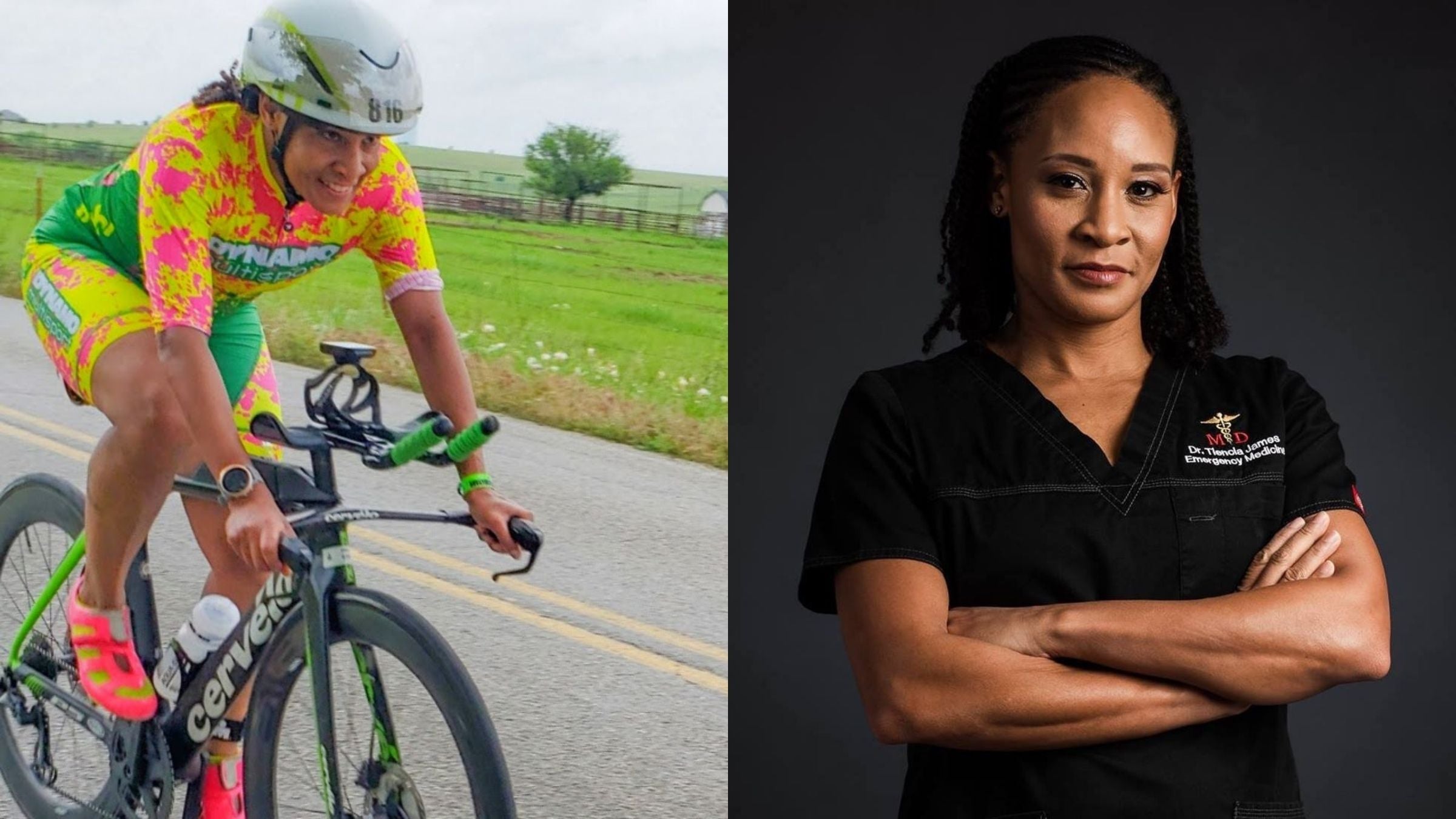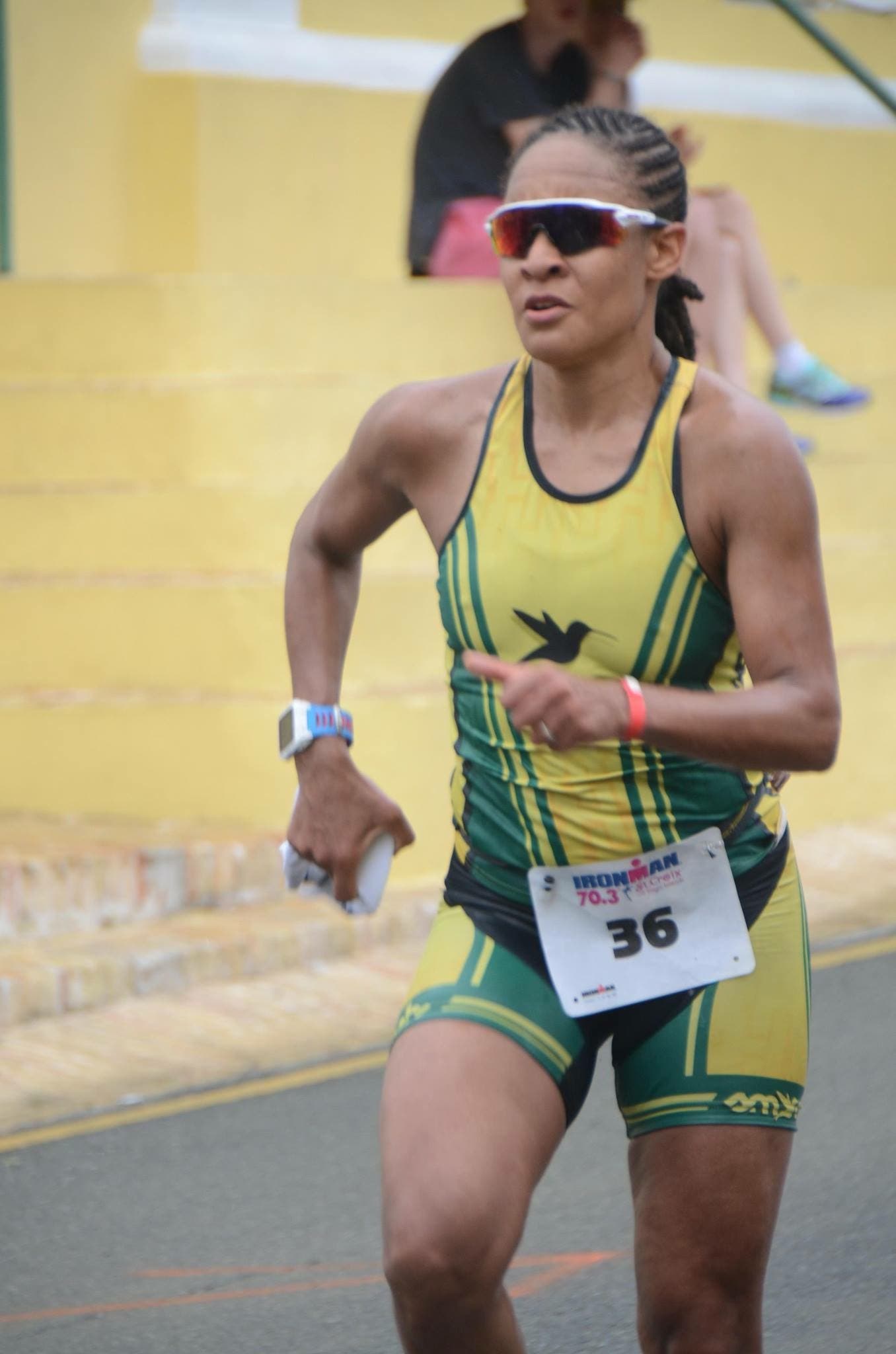How This ER Doc Qualified for Kona in the Midst of a Pandemic

(Photo: Tiencia James)
As an emergency medicine physician in the middle of a global pandemic, it would be understandable if Dr. Tiencia James needed to take a break from her triathlon hobby. After all, her shifts are varied and long, she spends hours on her feet, and a busy schedule plus double-masking makes it hard to stay fueled and hydrated while she’s at work. Then when she comes home, her shift as mother of three children (ages 14, 13, and 9) begins. Yet, despite it all, she gets on the trainer or treadmill at 2 a.m. (or 8 a.m., or noon, or whenever it is that she can).
“I have learned that it is not the one big workout that makes you faster, it is the consistency over time that slowly makes you a better athlete,” said James, 43.
Consistency is a way of life for James, who has been a competitive distance runner since childhood. She continued to run through medical school and residency, through three pregnancies, and during her very full days in Snellville, Georgia. In 2015, she took up triathlon after seeing the Ironman World Championship on television.
“I was really inspired by what seemed like not just a race, but a challenging adventure,” she said. “I was excited about getting over my fear of swimming in open water, and learning about cycling for the first time.”
James took naturally to triathlon—particularly long-course racing. “I love the fact that the longer the race, the less pure speed and fitness determines results alone. Your mental toughness, pacing, nutrition, and problem-solving abilities are just as important and makes the race very interesting and unpredictable.”
Mental toughness, pacing, and problem-solving are things James has mastered while working in the emergency room. No two patients are alike, and the full, unpredictable days (especially during the COVID-19 pandemic) mean James is constantly adapting where she can. She keeps a stash of protein shakes at the hospital to drink while waiting in the ambulance bay between patients, and sends her work schedule to her coach so that night shifts at the hospital are followed by a rest day or easy training load.
“My job can be very stressful, so I try to keep my training from adding to the stress. Sometimes, trying to squeeze in that one hard workout after a late shift where you have only slept for four hours will cause you to miss the next three workouts,” James said. “In that case it’s better to modify things a bit, do an aerobic short run or easy swim and try again later during the week on another day.”
RELATED: 5 Bike Sets for the Time-Crunched Triathlete
This flexible and adaptable approach pays off on race day, as James has consistently improved over the past six years as a triathlete. And at Ironman Tulsa earlier this year, James clocked a 11:24:25 to secure a spot at the Ironman World Championship race in Kailua-Kona, Hawaii. For James, the accomplishment is about much more than triathlon.
“When I go to the Emergency Department, I have the privilege of taking care of patients facing debilitating illness who would give anything to be able to complete a triathlon. Seeing death much more than the average person inspires me to not be afraid to dream big or to fail,” James said. “The reality is that life can be unpredictable, and it is up to us to make the most of it with whatever time we are given. With each shift, I am reminded how lucky and grateful I am to have the ability to give it a shot each day, regardless of the outcome. This perspective is what has fueled my continued enjoyment of the process of training, which has contributed to my success.”

Day in the Life: Tiencia James
“With three kids, ages 14, 13 and 9, things do get hectic in my house,” James said. “The key for me to get my training in is to schedule workouts in advance and always try to do key workouts early in the morning, or when the kids are at school if I am working evening or night shifts. If I wait until later in the day, even if I am off work, things always come up with my family. I have a basement gym with a treadmill and a smart trainer so I can do most workouts at home even at 3 a.m. if needed. It also helps that my husband, Andy, is incredibly supportive of my triathlon goals and will take over home duties so that I can finish a workout or sleep in when needed.”
5:45 a.m. – Wake up, light meal (green tea and toast or yogurt)
6-7:30 a.m. – Swim in neighborhood pool
7:30-8:30 a.m. – Get kids off to school/bus stop
8:30-9 a.m. – Breakfast
9-11 a.m. – Household stuff (bills, emails, groceries, walk dog, etc.)
11 a.m.-1:30 p.m. – Second workout, usually either 1-hour run or 1- to 2.5-hour trainer ride
1:30-2 p.m. – Eat lunch
2-3 p.m. – Nap (on a good day)
3-4:30 p.m. – Kids home, help with homework, after school practice pick-up as needed
5 p.m.-2 a.m. – Work in the Emergency Department
3 a.m. – Go to bed (with plans to sleep in the next day and have husband get the kids off to school)
Learn how other busy professionals find time to train in our Make it Work archives.